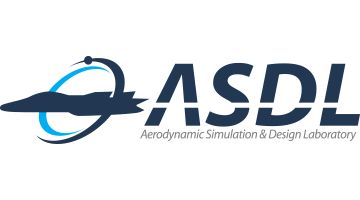Flow Analysis of Liquid Rocket Tank
Study of the flow inside space launch vehicle tank
Cryogenic fluids are mostly used as propellants/oxidants in liquid rockets. Because of the low boiling point of the cryogenic fluid, heat exchange and mass exchange between the liquid fuel and the gas phase continue to occur immediately after takeoff of the launch vehicle due to the various heat sources acting on the tank. In addition, various gravitational environments work depending on the launching trajectory and mission of the launch vehicle, and pressurization of the tank can be employed for stable propellant / oxidizer use. As such, due to various external factors acting on the launch vehicle tank, the propellant / oxidant in the tank exhibits a three-dimensional complex physical behavior and the remaining propellant / oxidant varies with the sequence of the launch vehicle. Therefore, it is very important to predict the amount of propellant / oxidizer required and the flow inside the tank for the successful mission of the launch vehicle. In ASDL, the following study is carried out through the flow analysis program developed to analyze the flow in the oxidant tank.
Tank pressurization by gas injection
We have analyzed the case where a pressurizer is injected into an oxygen tank installed at the NASA Stennis Space Center's E-1 test facility. It is the case that the hot pressurizer is radially injected in the state that the liquid oxygen is 90% and the gaseous oxygen is 10% inside the spherical insulation tank. The results of analyzing under zero gravity conditions for 1 second show that the vortex occurs due to the injection of the pressurant and tends to penetrate the liquid phase downward when it reaches the tank wall. On the other hand, when the gravity acts, the gas can not push the liquid due to the high hydrostatic pressure of the liquid phase, and the interface of the liquid crystal is flattened.


Tank pressurization due to external heat source
Based on the results of the existing Saturn AS-203 experiment, the phenomenon that the tank is pressurized due to the external heat source is analyzed. The external heat flux from each part of the tank was differently applied and analyzed according to gravity and surface tension.



Fig. 3. volume fraction contour of gas phase: (L) low gravity, (R) zero gravity
Sloshing phenomena of liquid propellant due to external force acting on the tank
Sloshing phenomenon refers to the relative motion that occurs between a fluid and a container containing the fluid. Sloshing inside the tank when transporting various liquids as well as propellants of liquid rockets may cause noise due to impact on the tank wall and in severe cases, it also causes damage to the structure. So This requires accurate interpretation and physical understanding. In this study, numerical analysis of the drop tower experiment performed at NASA Marshall Space Flight Center was carried out and the asymmetric and complex sloshing phenomenon caused by external acceleration was well captured.

-0.1, +0.53, +0.99, +1.23, +1.94, +2.44 sec






